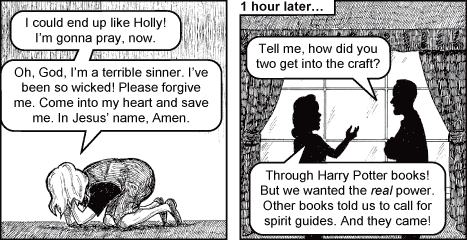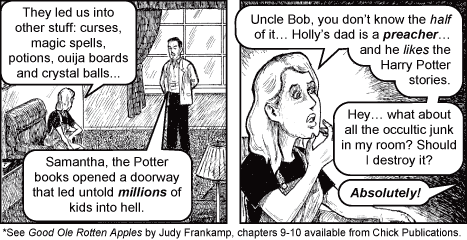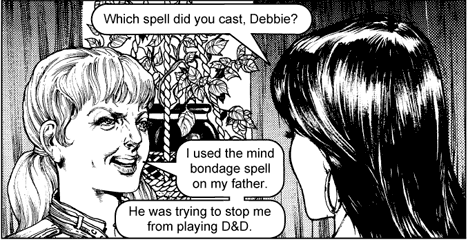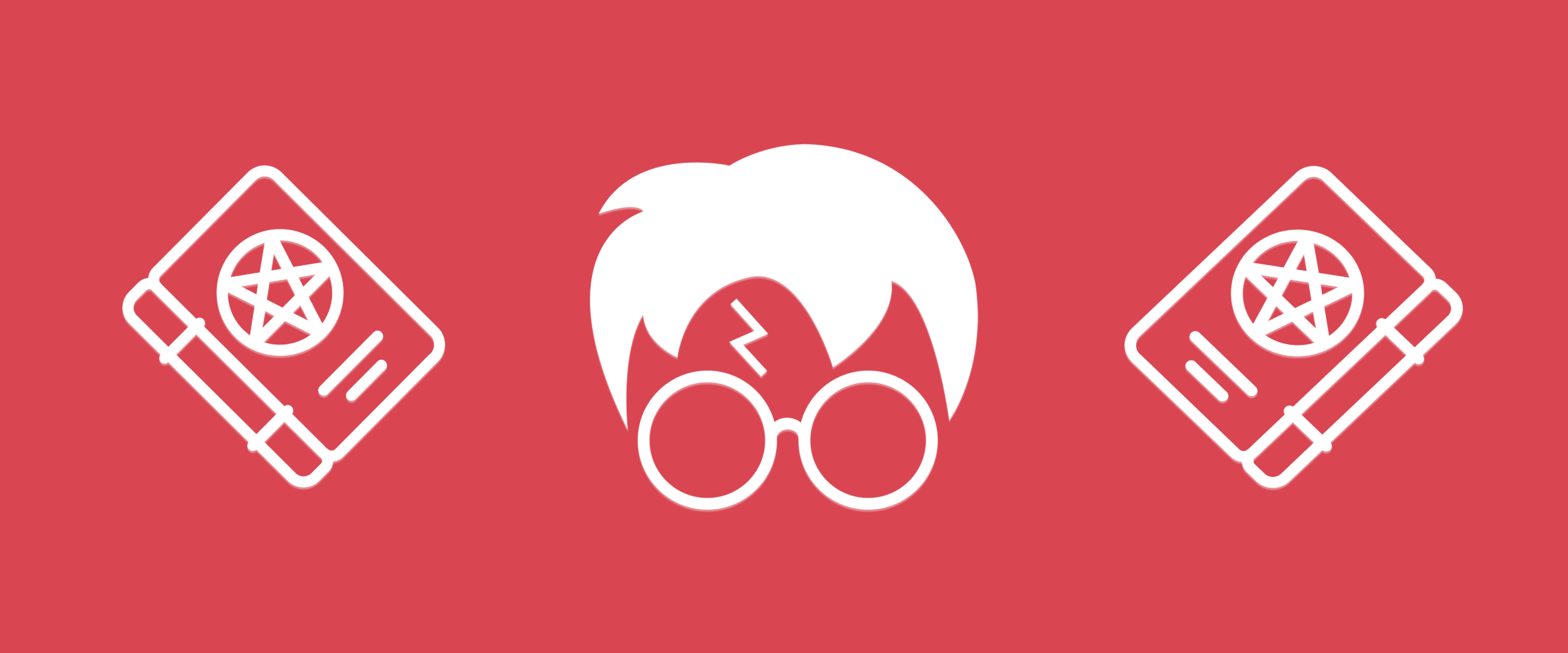Whether it be war, death, competing ideologies, or a general lack of interest – religions of all sizes and practices can be phased in and out of relevance. But instead of fading into obscurity, religion, especially niche faith groups, can serve as the inspiration for popular media. Hellenistic traditions, which have since been overpowered by the more dominant Christian faith, remain immortalized through modern media like “Hercules,” “Percy Jackson and the Olympians,” and “Clash of the Titans” despite lacking a prominent following.
Popular culture and media can immortalize our society and its values at the time, whether that is in the content itself or the connotations surrounding it. When a piece of media has a radically negative connotation, a moral panic can emerge. These situations, typically propagated by a religious group, enabled by the media, cause mass panic, aversion and fear regarding a specific work or genre of works.
The burning of Rome was spurred on by anti-Christian sentiments, the Salem Witch trials were enabled by anti-occultist beliefs, and, within the past few decades, a contemporary “Satanic Panic” has emerged, surrounding tabletop games like “Dungeons & Dragons,” heavy metal and young adult novels and films like the “Harry Potter” series and “The Golden Compass.”
While in antiquity, Christianity was persecuted, contemporary panics often are synthesized by Christians – primarily fundamentalist or evangelical, conservative sects. Evangelical Christianity, and other ideologically similar offshoots, have influence on moral panics in response to popular culture: specifically, the outcry against “Dungeons & Dragons” and “Harry Potter,” as well as the subsequent negative connotation cast onto new religious movements (NRMs) like Satanism because of it.
LaVeyan Satanism, the main foe of Evangelical preachers and media, is no more than another system of belief. The Church of Satan, which serves as a mouthpiece for that orientation of Satanism, follows the Satanic Bible written by Anton LaVey in 1969, promoting individualism, “responsibility to the responsible,” and “vital existence instead of spiritual pipe dreams.” Contrary to their name, adherents of the Church of Satan don’t actually worship the Devil; they are atheists who follow the principles of a mythological character, shaped by folklore and culture. As Reverend M. A. Mandrake writes, “most religionists interpret Satanism through the lens of their own mythological prejudices. Yet the hegemony of spiritual religions has, through the course of human history, solidly established the groundwork of what is considered Satanic. This provides a context for us that could be alienating, but which we adapt toward our own stimulation.”

Illustration by Jack Chick.
The term “moral panic” was coined by sociologist Stanley Cohen, who, in his work “Folk Devils and Moral Panics: The Creation of Mods and Rockers,” defined it as “a condition, episode, person or group of persons [that] emerges to become defined as a threat to societal values and interests.” It has five separate elements:
- Concern about the potential or imagined threat;
- Hostility – moral outrage towards the “folk devils” who embody the problem and agencies who are “ultimately” responsible (who, in turn, could become folk devils themselves);
- Consensus – a widespread agreement that the threat exists, is serious and that “something should be done.” The majority of elite and influential groups, especially the mass media, tend to adopt this consensus, or at least should, in order to conform.
- Disproportionality – an exaggeration of the number or strength of the cases, in terms of the damage caused, moral offensiveness and potential risk if ignored. Public concern is not directly proportionate to objective harm.
- Volatility – the panic erupts and dissipates suddenly and without
warning.
From this concept, two roles emerge: that of the establishment, or the “moral entrepreneur,” which typically involves organized interest groups like governments, religions, media conglomerates and institutions, and that of the opposition, or the “folk devil.” Cohen defines this opposition in the context of the coverage of the mods and rockers conflict of the Sixties and as “visible reminders of what we should not be.” Two prominent subcultures formed in 1960s Britain: mods, who pushed the Modernist movement and dressed in clean, bright clothing, contrasted greatly with rockers (later known as greasers) who surrounded themselves in the emerging rock n’ roll and punk scenes. Petty fights and pub brawls between the two groups became highly publicized, stirring up even more controversy and hostility among not just the rivals, but the general public. Cohen concluded that while the fights did occur, they were no more common than the normal rate of violence among youth at the time, and that the media perpetuated a false claim that led to the alienation of the subcultures by a concerned populace.
An inherent power struggle forms between the two roles, moral entrepreneur and folk devil, which is evident in any countercultural movement: from flappers, to mods and rockers, to grunge and DIY. From this, micro- and macroscopic effects start to take place: on a macroscopic level, the society witnesses cultural change and the possible shift of values; on a microscopic level, these individual values are questioned, especially as it relates to a single person’s identity and background.
From here, moral entrepreneurs and folk devils attempt to influence individual decisions in order to form a larger social group that abides by their values, usually utilizing mass media in the process. Cohen characterizes this situation as a “crusade in favor of censorship” that is perpetuated by groups with their own personal interests, in which the media employs their role as an intermediary because they know that a message can be interpreted (or “decoded” in the words of cultural theorist Stuart Hall) by an audience differently based on how that message is transmitted. The media does this by picking which role they’d like to play in these “moral panic dramas,” as noted by Cohen:
- Setting the agenda – selecting those deviant or socially problematic events deemed as newsworthy, then filters to select which of these events are candidates for moral panic;
- Transmitting the images – transmitting the claims of claims-makers, by sharpening up or dumbing down the rhetoric of moral panics;
- Breaking the silence, making the claim. More frequently now than five decades ago in the Sixties, the media are in the claims-making business themselves. This supplants the role of the interest group: for example, Dana Perino, a Fox News anchor, claiming that, because it was allegedly tampered with, climate science is untrustworthy, and, by extension, so is climate change. Perino was repeating unsound research that cherry-picked specific data points that, when isolated, cause fluctuations in the overall study. In this case, the media was not perpetuating a claim made by another, but making it, morphing their role into that of an interest group. Continual practice of this contributes greatly to media bias and can attract invalidated claims.

GIF by Cody Corrall, featuring images by HeadsOfBirds from the Noun Project.
By utilizing the tool of mass communication, a moral panic can be established fairly easily: concern and disproportionality can be synthesized by transmitting “deviant” images, a consensus can be established by setting the agenda, and hostility can be created by making claims and pointing fingers. In doing so, the roles of judge, jury and executioner all transfer to the media, and, by extension, the moral entrepreneurs. All of this culminates in a concept that Cohen calls “virtual vigilantism,” or “tabloid justice.”
“The moral integrity of the police and other authorities is tarnished; criminality is less an assault on sacred and consensual values than a pragmatic matter of harm to individual victims,” Cohen wrote. “Above all, crime may be presented as part of the wider discourse of risk.”
With this massive amount of power, the ability to stir up the general public and manufacture a moral panic surrounding a specific piece of media is amplified, especially given our technology-saturated world.
Children are an impressionable target for messages transmitted via mass communication systems, so it makes sense for the brunt of the outcry over inappropriate materials to be about them.
“All sides want to claim a share in how we educate the young, since shaping childhood is often seen as a way of shaping the future direction of our culture,” writes Henry Jenkins, a comparative media scholar.
In “Devilish Consumption: Popular Culture in Satanic Socialization,” Asbjørn Dyrendal writes that “popular culture may also serve as an arena of learning independent [or] direct attempts at teaching,” and that this can present itself through inspiring “some fans into emulating their hero.” This isn’t always a bad thing – admirable traits can be discovered through fictional stories and help children develop their own values and personalities. Former First Lady Michelle Obama cites “The Mary Tyler Moore Show” as inspirational because it centered on an independent, career-focused woman: “She worked in a newsroom, she had a tough boss, and she stood up to him. She had close friends, never bemoaning the fact that she was a single. She was very proud and comfortable in that role.” Fictional characters, when written well, represent multifaceted people and can, through the art of storytelling, guide individuals in their handling of situations.
“Children use stories to escape from or reaffirm aspects of their real lives,” Jenkins wrote. If children cannot find positive role models in their day-to-day lives, a mild form of escapism into media can help them build up a strong foundation of character through a form of self-education. To interest groups like Evangelical Christians, however, some forms of media that adolescents enjoy – whether in an active search for good character or just to have fun and indulge in a fantasy world – are not a source of positive inspiration, but instead a breeding ground for occultist messages and influence.
The “Harry Potter” franchise by J. K. Rowling is one of the highest-grossing series of all time and remains a prolific example of imagination and creativity in the genre of young adult fantasy. While an international community has been built around the series, generating a participatory fan culture that produces art, spinoff pieces, costumes, recipes and more, not everyone is fond of the messages that the series transmits. Evangelical Christians have been some of the most adamant protestors to the series since its inception in 1997.
Claiming that the series actively promotes witchcraft and the occult, Jack Chick, a prominent thought leader in Evangelicalism who focused on educating their movement on inappropriate materials, fought to keep “Harry Potter” off the shelves of libraries or, at the very least, out of the hands of fundamentalist adherents. Chick, known for his radically conservative, moral-heavy comic strips called “Chick Tracts,” made his interpretation of “Harry Potter’s” occultism very clear: “The Potter books opened a doorway that led untold millions of kids into hell.”

Illustration by Jack Chick.
Chick displays Cohen’s five separate elements of a moral panic through one of his comic strips, “The Nervous Witch,” which addresses the rapidly-growing popularity of the “Harry Potter” franchise: concern about the threat, as shown through the more holy, traditional character of Uncle Bob; hostility toward the “occultist junk”; establishing consensus between the ideology he’s trying to promote and the target audience, a curious and rebellious Samantha; disproportionality by claiming that the “Harry Potter” novels were a direct doorway to hell; and volatility with the sudden solution to the problem, as shown with the King James Bible, the “only English version that Satan hasn’t messed with.” In doing so, Chick sets the agenda, transmits the images, and makes the claim of occultism toward his Evangelical peers.
The effectiveness of his message is shown later in attempts by concerned parents and community members to cancel “Harry Potter” meetups (like “Muggle Studies lessons” at an Oskaloosa library), to ban “Harry Potter” books from libraries (which was number one on the Top 100 Banned/Challenged Books list from 2000-2009, according to the ALA Office for Intellectual Freedom), and ultimately save their congregations – and their children – from the ensnarement of this negative message.
“Dungeons & Dragons,” a tabletop game that debuted in 1974, faced similar treatment by Evangelicals. An early “Chick Tract” strip depicts the popular roleplaying game, which often involves elements of high fantasy, as a training for future involvement in witchcraft, and implies that by learning fake spells through the game, players could later apply them to real life. Jenkins quotes Berit Kjos, an active Evangelical thought leader as well, in comparing “Harry Potter” to “Dungeons & Dragons:”
“1. Both immerse their fans in a plausible, well-developed fantasy world, replete with an evolving history, a carefully mapped geography, and wizards that model the thrill-packed and power-filled way of the mythical shaman.
- In this fantasy world, adults and children alike are led into imagined experiences that create memories, build new values, guide their thinking and mold their understanding of reality.
- This process is reinforced by innumerable other occult images and suggestions created by an entertainment industry eager to please a global market — a worldwide base of potential customers that favor ‘inclusive’ and ‘tolerant’ pagan entertainment and turn their backs to Biblical values.”
Both media texts were seen as equally occult in their respective ways and served as additional fuel to the anti-occultist movement that Evangelicals avidly pushed.

Illustration by Jack Chick.
This moral panic over “Harry Potter,” “Dungeons & Dragons,” and Satanism reflected negatively on the Church of Satan in many different ways, but the criticism of the new religious movement was seen prominently in the courtroom.
In “Decline of A Moral Panic,” Jenny Reichert and James T. Richardson found that: “Excessive negative media attention in the late 1980s and early 1990s contributed to the perceived existence of a Satanism threat, demonstrated by an increase in legal claims of Satanic involvement, especially homicide and ritual sexual abuse of children. This media attention contributed directly to the development of a moral panic surrounding membership in Satanist groups.” Whether those who committed the crimes adhered to Satanism or not, the mere mention of the faith, because of the connotation cemented into place by Evangelical Christians through the media, affiliated the case with the Church anyway. Because of that, those already affiliated with the Church of Satan were put under even more scrutiny, just like the mods and rockers of the Sixties, despite the lack of evidence showing their connection to the crime.
Reichert and Richardson concluded that the perception of Satanists was that they “were likened to destructive cult leaders; they were agents who freely chose an alternative lifestyle focused on the disruption of a society based on Christian morals.” Juries were also found, if the mere suggestion of Satanism was presented as a possible motive, to automatically typify the case and rule against the perceived Satanist in what could very well be called a contemporary witch hunt. Unfounded claims increased because the media refused to refute them, the reputation of the Church of Satan worsened, and the moral entrepreneurs yet again prevailed over the folk devils.
The impact that counter-Satanist movements have had on how we perceive Satanism as a validated religion is massive. Because of the “Satanic Panic” of the 1980s and 1990s, Satanism has become not just othered, but ostracized. In doing so, our society has invalidated the Church of Satan as a new religious movement and instead relegated it with the toxicity of the cult movements of the decade prior, a misconception that isolates an entire section of the population for no sound reason aside from fear.

Illustration by Jack Chick.
When society allows the motives and interests of one group to overcome the moral integrity of the whole, apprehension and suspicion overcome qualities like civility and decorum, leaching to not just the transient world of media, where there are seemingly no consequences, but to the binding legal world, where consequences are very real. Even today, in a much more open-minded society, people find themselves at odds with othering and xenophobia; this tech-laden world can make, say, a conspiracy theory about the Democratic Party running a child prostitution ring into a target for vigilante “justice,” leading to widespread misinformation, harassment, and shots fired within the span of two months. These situations — the Satanic Panic, Pizzagate, and the like — are a direct result of a collective failing to fully “decode” the messages received on the daily, with implications that are more binding than the claim itself.
Ultimately, recognizing the significance and subtext of the messages being decoded — who is promoting it, why, and to whom — is the best way for society to overcome media steeped with bias and to advance past traditional narratives, allowing for the stories of those unjustly vilified to come to light.
This isn’t to say that the population caught between moral entrepreneurs and folk devils are completely to blame, though by better understanding how society consumes and processes messages transmitted through mass media channels, undue bias, fanaticism, and virtual vigilantism might be easier to avoid, and our society will be better because of it.
Header by Cody Corrall, featuring images by Ryan Thomas Noll and Bernar Novalyi from the Noun Project.




NO COMMENT